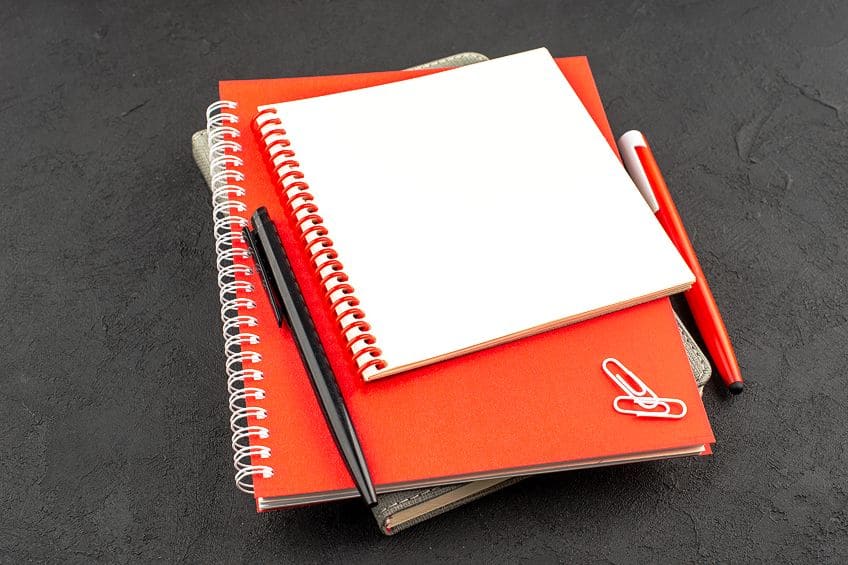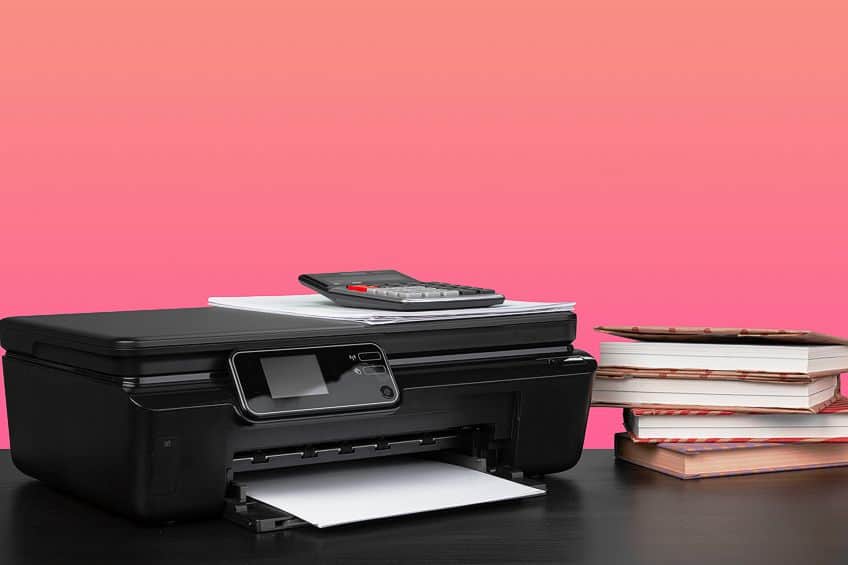Standard Paper Sizes – Understanding Standard Paper Sizes
Have you ever noticed the different numbers on a box of printer paper? Do you know what these numbers signify? Additionally, do you understand the difference between Tabloid, A5, and A4 papers? In this article, we will be guiding you through all of the different paper sizes and guidelines, and helping you understand the uses of the different paper sizes.
An Overview of Standard Paper Sizes
Before any paper existed, people used to communicate by drawing symbols and pictures that were carved into tree bark, or hand-painted on cave walls. Marks were also made on clay tablets or papyrus. Then, around 2000 years ago, the Chinese crafted cloth sheets that were used to record writings and drawings, which led to the creation of paper.
Paper was originally produced in China in the fifth century by Ts’ai Lun, who was a court official. He used mulberry bark, rags, and hemp and mixed them with water.
He then mashed it into a pulp and pressed out all the liquid, making it into a thin mat, and hung it out in the sun to dry. Ts’ai’s discovery soon traveled to the Middle East, as we know it today, but it was only 500 years later that the making of paper started in Europe. The very first paper mill was established in Spain, and soon after mills appeared across Europe.

England began making paper in the late 15th century and was soon supplying paper to all its colonies. Then in 1690, the United States built its first paper mill in Pennsylvania using the old Chinese method of shredding cloths and rags into fibers. However, as the demand for the use of paper increased in the country, they started to use fibers from trees, as it was cheaper than cloth. Today, special forests are grown and managed, and paper is still made from trees or recycled.
There are only two main standard paper-size systems in use globally. These include the ISO (International Organization for Standardization), and the ANSI (American National Standards Institute).
The ISO international standard, referred to as ISO 216, is used in most countries of the world. The North American system, referred to as ASME Y 14, is governed by the ANSI (American National Standards Institute) and is used in the USA, Canada, the Philippines, Chile, and parts of Mexico. The ISO paper standard is metric, so all the measurements are in millimeters, whereas the ANSI paper standard is imperial, so all the measurements are in inches. The ISO paper standard has only one aspect ratio of 1:2, whereas the ANSI has two aspect ratios of 4:3 and 3:2.
Definition of the ISO Standard Paper Sizes
The ISO 216 Standard Paper Size is an international paper standard used for designating the size of a sheet of paper. This ISO-size method involves height-to-width proportions, where the height and width of the pages correlate with one another, like the diagonals of a square. To put it in simple terms, when a sheet of any ISO system paper size is folded in half, along the longest side, then it forms the next smaller size of paper in the system.
ISO paper sizing is centered on the metric system, where the width, as well as the height of all pages, are measured off to metric lengths.

Paper is usually identified by height-to-width proportions in grams per square meter, making it easier to calculate the mass of any document when the format of all the pages is known. The ISO paper size system is divided into three main groups: the A-series, B-series, and the C-series.
The A-Series Paper Sizes
The A-series paper sizes are used for general paper sizes that are used in books, ledgers, posters, and more. In the A-series paper sizes, the A0 paper has an area of one square meter, and the A1 paper size is half of the height of the A0 paper size. This principle is also used for all the other smaller sizes of paper. The width as well as the height of the paper is rounded-off in millimeters.
The B and C-Series Paper Sizes
The B-series paper sizes were introduced to give a more extensive variety of paper sizes. To explain this a little better, a size B-series paper size falls between the A-series paper size. This means that the B1 paper size falls halfway between the A0 and the A1 paper sizes.
The C-series paper sizes were specially designed for envelopes, and they were made to fit all of the A and B-series paper.
This means that a piece of A4 paper size that is unfolded will fit perfectly into a C4 envelope. Also, a piece of A4 paper folded, forming an A5 paper size, fits perfectly into a B5 envelope. To explain the ISO paper size system more clearly, refer to the paper size chart below. All the dimensions are in millimeters.

| A-Series Paper Sizes | B-Series Paper Sizes | C-Series Paper Sizes | |||
| A0 | 841 x 1189 | B0 | 1000 x 1414 | C0 | 917 x 1297 |
| A1 | 594 x 841 | B1 | 707 x 1000 | C1 | 648 x 917 |
| A2 | 420 x 594 | B2 | 500 x 707 | C2 | 458 x 648 |
| A3 | 297 x 420 | B3 | 353 x 500 | C3 | 324 x 458 |
| A4 | 210 x 297 | B4 | 250 x 353 | C4 | 229 x 324 |
| A5 | 148 x 210 | B5 | 176 x 250 | C5 | 162 x 229 |
| A6 | 105 x 148 | B6 | 125 x 176 | C6 | 114 x 162 |
| A7 | 74 x 105 | B7 | 88 x 125 | C7 | 81 x 114 |
| A8 | 52 x 74 | B8 | 62 x 88 | C8 | 57 x 81 |
| A9 | 37 x 52 | B9 | 44 x 62 | C9 | 40 x 57 |
| A10 | 26 x 37 | B10 | 31 x 44 | C10 | 38 x 40 |
Popular ISO Paper Sizes
What is a normal paper size? The standard ISO paper size system covers an extensive range of paper formats. However, not all of them are used daily, the A4 paper size is the normal and most common, which is widely used daily for office use. In the paper size chart below we will give you more of the most used paper formats and their application.

| Paper Size | Application |
| A0 and A1 | Posters and Technical drawings |
| A1 and A2 | Flip charts |
| A2 and A3 | Diagrams, large tables, and drawings |
| A4 | Magazines, books, forms, letters, catalogs, copying, and laser printing |
| A5 | Notepads |
| A6 | Postcards |
| B5, A5, B6 and A6 | Books |
| C4, C5 and C6 | Envelopes |
| B4 and A3 | Copying machines and newspapers |
| B8 and A8 | Playing cards |
A4 Paper
A4 Is the most common of all the paper sizes and is used extensively in most parts of the world for printing and stationery. The size, according to the ISO 216 standard, is 210 x 297 mm. So, what makes this paper size more important than all the other paper sizes? A larger piece of paper gives you more space to write and draw on, but it also takes up a lot more space. So, the size of the paper you choose will be determined by the purpose.
Most of the school books and notepads used by students are an A4 size because they need to carry them around in their backpacks all day long.

This means that they need to be the right size to fit into their backpacks, but have enough space to write and draw on. Most magazines and letters are also printed on A4 paper size, making it much easier to store and transport. Most copying and computer printers are equipped for the A4 paper size, and you can also modify the format when changing it from portrait to landscape format.
A3 Paper
The A3 paper size is twice as large as the A4 and measures 297 x 420 mm. This makes it a very versatile size, perfect for signs, posters, leaflets, and menus. It is also used extensively by professionals as well as for personal use for printing and mounting photos and other designs.
A5 Paper
The A5 paper size is half the A4 size, measuring 148 x 210 mm. This is an ideal size for notebooks, greeting cards, diaries, flyers, leaflets, and brochures. It is also the perfect size for graphic design and can easily fit into your handbag or purse when you are traveling.

B4 Paper
The B4 paper size was developed to provide a wider range of paper sizes. The B4 paper size measures 250 x 353 mm and is larger than an A4 paper size and lies between the A3 and A4 paper sizes. The B4 paper size is suitable for writing but is not suitable for printing on a computer printer as they are not compatible. They are more suited for editing tables, little posters, and notes.
The B-series paper sizes were specially designed to fit neatly into the C-series envelopes.
B5 Paper
Similar to the B4 paper size, the B5 cannot be printed on a computer printer as they are not compatible. This paper size is more suited for printing magazines and advertising leaflets and creating menus. It is also used for making notebooks and pads and was also developed to fit neatly into the C-series envelopes.

Advantages and Disadvantages of Using the ISO Standard Paper Sizes
The size of the paper can affect the everyday working experience, like office work, and drafting in a drawing office, schools, and colleges. So, we need to understand the advantages when working with the ISO 216 standard paper sizes. There must be a standard size for paper for everyone to follow and use, which is why paper sizes were standardized.
The size of a sheet of paper affects many things, such as binders for filing, envelopes, filing cabinets, printer trays, picture frames, documents, and more.

PROS
- Drawings that are produced on very large sheets of paper can be reduced to more convenient sizes. The ISO standard paper sizes make this possible.
- It is a lot more economical and eco-friendly to print standard-size sheets.
- ISO envelope sizes are designed to fit standard-size paper sheets, so you can buy any envelope in the store, and it will take your paper sheet size.
CONS
- Folding of the ISO paper sizes is an issue.
- The ISO paper sizes are mostly used for office business documents and home use on the computer.
Definition of the North American Standard Paper Sizes
Paper sizes in the USA were not designed to fall in with the mathematical formula like the ISO sizes. This is because the paper was manufactured by hand and the molds used were 44 inches x 17 inches creating eight 8.5 x 11-inch pieces that were known as the U.S. letter size. In 1922, the ANSI (American National Standards Institute) officially classified the sizes of letter paper and legal paper. In 1995, this officially became the ANSI/ASME Y14.1 standard for paper sizes.
The various formats of the paper sizes in this standard are represented by ANSI, and then a letter follows indicating the paper size.
The North American or ANSI standard does not use the same paper size as the ISO standard, instead, they use Letter, Legal, and Ledger/Tabloid paper sizes that are contained in the ASME Y14.1 standard. Below are some examples of standard paper sizes in inches.

| Size of paper | Width x height (Inches) | Aspect ratio |
| Half letter | 5.5 x 8.5 | 1:1.5455 |
| Government letter | 8.0 x 10.0 | 1:1.25 |
| Letter | 8.5 x 11.0 | 1:1.2941 |
| Junior legal | 5.0 x 8.0 | 1:1.6000 |
| Government legal | 8.5 x 13.0 | 1:1.5294 |
| Legal | 8.5 x 14.0 | 1:1.6471 |
| Ledger/Tabloid | 11.0 x 17.0 | 1:1.5455 |
The U.S. letter size (8.5 x 11 inches) is known as the A-size, which is followed by the B, C, D, and E-sizes, where the A-size paper is the letter size and the B-size is the ledger or tabloid size. As the ISO standard uses one single ratio for each size, the ANSI standard uses two ratios, which makes reducing and enlarging the paper sizes more complicated. See below for ratios and comparisons.

| Size of paper | Width x Height (Inches) | Aspect ratio | Closets ISO size |
| A | 8.5 x 11.0 | 1:1.2941 | A4 |
| B | 11.0 x 17.0 | 1:1.5455 | A3 |
| C | 17.0 x 22.0 | 1:1.2941 | A2 |
| D | 22.0 x 34.0 | 1:1.5455 | A1 |
| E | 34.0 x 44.0 | 1:1.2941 | A0 |
There is also a B-plus or Super B-size that measures 13 x 19 inches, which is designed with a one-inch margin all around that makes provision for printing bleed. This is also accepted as a Super A3 size. With the ANSI standard, there is also an architectural size designed for architectural purposes. This has a ratio of 4:3 and 3:2, such as the ratio used on computer screens. To explain the ANSI paper size system more clearly, refer to the table below.

| Size of paper | Width x Height (Inches) | Aspect ratio |
| Arch A | 9.0 x 12.0 | 4:3 |
| Arch B | 12.0 x 18.0 | 3:2 |
| Arch C | 18.0 x 24.0 | 4:3 |
| Arch D | 24.0 x 36.0 | 3:2 |
| Arch E | 36.0 x 48.0 | 4:3 |
| Arch E1 | 30.0 x 42.0 | 7:5 |
Popular ANSI Paper Sizes
The most popular paper sizes with the ANSI are the formats for Letter, Legal), and Ledger or tabloid. These three formats are the most used in everyday life, the Half Letter is normally used for personal writing, diaries, and notepads, and the government letter and legal for more specific purposes.
Letter
The Letter format (8.5 x 11 inches) is the most used paper size and is similar to the A4 format. This is used for books, letters, magazines, and copying and printing paper. This type of paper size can be found in schools, colleges, offices, and at home for personal work.
Legal
The Legal format (8.5 x 14 inches) is a general-purpose legal-size paper that is used for legal documents like contracts and loan agreements. It is also used for business and accounting purposes, where more information per sheet of paper is required. This type of paper size is ideal for use on computer printers, copiers, and fax machines.
It is also a perfect size for excel spreadsheets and business brochures or any other form of advertising, price lists, and flyers.

Ledger or Tabloid
The ledger or tabloid paper (11 X 17 inches) are the same size of the paper, the only difference is the orientation. The ledger paper is a landscape, and the tabloid is a portrait format. It is used for smaller size newspapers, large table diagrams, drawings, maps, blueprints, signs, and any other larger images.
Advantages and Disadvantages of Using the ANSI Standard Paper Sizes
As with the international standard paper sizes, you have a few pros and cons when using this paper size system. We will mention a few of these and let you decide what is best to use. As always it is important to understand the paper sizes if you are going to be working a lot with it.

PROS
- The format of the paper sizes has an aspect ratio that is in whole numbers, making it a lot easier to work with.
- The architectural paper size system has a lot more options available.
CONS
- This system is based on two different aspect ratios. This makes it very difficult to calculate the weight of a single sheet of paper, and harder to scale the paper sizes.
- The North American Standard for paper sizes creates many problems when it comes to exchanging documents internationally.
- When trying to use a copying machine or a computer printer with the ANSI standard, it may pose certain problems as there are no trays for those sizes.
Other International Paper Size Standards
There are several other international standards for paper sizes in other countries that do not follow the two main standard paper size systems. This is not something that you would normally be aware of, but it may be important if you ever find yourself in one of these countries.
China
The Chinese paper size standard is GB/T 148-1997, which documents the ISO standard A and B paper sizes, but does not follow the same principles. They have added a D-series that is different from the German and the Swedish D-series.
The D series of the Chinese standard has an aspect ratio where the longest side of the paper sheet is twice as long as the shorter side of the next smaller size.
The Chinese paper manufacturers have created three kinds of paper sizes to match any of their product sizes. These include 787 x 1092 mm: 889 x 1194 mm and 890 x 1250 mm. The Chinese standard printing product sizes are as follows:
Japan
The Japanese use the JIS (Japanese Industrial Standard) paper sizes that are divided into the JIS A and the JIS B-series, which are also available in Taiwan and China. The JIS A-series is similar to the ISO A-series with different tolerances, and the JIS B-series is one and a half times larger than the ISO A-series. They also have some additional paper sizes mostly used for local printers, such as the Shiroku and the Kiku.
Germany
Germany uses the DIN (German Standard) for paper sizes, which is the same as the ISO standard. The DIN standard was published in August of 1922 that included the A, B, and C series. However, in 1991 it was divided into two features. These include the DIN 476-1, which incorporates the A and B series, and DIN 476-2 incorporates the C-series. The original DIN 476-1 was withdrawn and replaced with a new standard DIN EN ISO 216, but the DIN476-2 is still in force.
Later editions of the DIN 476 from 1922 to 1925 have also included the D series.

France
Since 1967, France had made use of the ISO standard paper sizes. However, before that, they used the AFNOR system and some of these sized sheets are still used today. Some of the paper is handcrafted and bears a watermark that indicates where the paper was manufactured.
They also have some paper formats that are called double and quadruple types.

The double format known as Carre (450 x 560 mm) and Grande Monde (900 x 1260) has the smallest side which is doubled. The quadruple format known as Cloche (300 x 400) and Soleil (600 x 800) has both sides doubled.
Advantages of Using Other International Standards
International Standards bring social, technological, and economic benefits and assist in creating uniformity of products and services that break down the barriers to international trade. When conforming to International Standards, this gives the consumer reassurance that the products they buy are good for the environment and correct.
In the hands of the businessman International Standards are strategic and powerful tools to give guidelines to the companies, help to increase productivity, and access new markets. These International Standards bring the following benefits to companies:

- To help optimize operations and thereby save costs.
- The systems improve quality, sales, and customer satisfaction.
- It can help support access to new global markets.
- The standards help to increase market shares and give a competitive advantage.
- Can help to minimize any negative effects on the environment.
- Make sure that customers receive products that are reliable and of excellent quality.
- Ensures the requirements for imports and exports remain the same for all countries.
When looking into paper sizes, it can appear complicated, but it is fairly straightforward once you grasp how the system works. We hope this article has helped you grasp the fundamentals, and that you are now able to understand what size paper is best suited for what type of application.
Frequently Asked Questions
What Is a Normal Paper Size?
The letter paper size in the ANSI system and the A4 paper size in the ISO system appear to be the common paper size, as they are used for home printing, schoolbooks, letters, magazines, office documents, catalogs, printing paper, and much more.
What Is a Foolscap Sheet of Paper?
A foolscap sheet of paper is an outdated paper size that was often used for keeping records in the United Kingdom. This paper size was about 0,5 inches wider, and 2,0 inches longer than the letter paper size now used in the United States.
Who Decides the Paper Size Standards?
In the United States, the standard paper sizes in inches are decided by the ANSI (American National Standards Institute), and the document is called ANSI Y14.1. For the rest of the world, the ISO (International Organization for Standardization) decides the sizes, which is known as ISO 216. Some countries also have their own institutes and standards.
In 2005, Charlene completed her Wellness Diplomas in Therapeutic Aromatherapy and Reflexology from the International School of Reflexology and Meridian Therapy. She worked for a company offering corporate wellness programs for a couple of years, before opening up her own therapy practice. It was in 2015 that a friend, who was a digital marketer, asked her to join her company as a content creator, and this is where she found her excitement for writing.
Since joining the content writing world, she has gained a lot of experience over the years writing on a diverse selection of topics, from beauty, health, wellness, travel, and more. Due to various circumstances, she had to close her therapy practice and is now a full-time freelance writer. Being a creative person, she could not pass up the opportunity to contribute to the Art in Context team, where is was in her element, writing about a variety of art and craft topics. Contributing articles for over three years now, her knowledge in this area has grown, and she has gotten to explore her creativity and improve her research and writing skills.
Charlene Lewis has been working for artincontext.org since the relaunch in 2020. She is an experienced writer and mainly focuses on the topics of color theory, painting and drawing.
Learn more about Charlene Lewis and the Art in Context Team.
Cite this Article
Charlene, Lewis, “Standard Paper Sizes – Understanding Standard Paper Sizes.” Art in Context. May 23, 2023. URL: https://artincontext.org/standard-paper-sizes/
Lewis, C. (2023, 23 May). Standard Paper Sizes – Understanding Standard Paper Sizes. Art in Context. https://artincontext.org/standard-paper-sizes/
Lewis, Charlene. “Standard Paper Sizes – Understanding Standard Paper Sizes.” Art in Context, May 23, 2023. https://artincontext.org/standard-paper-sizes/.









